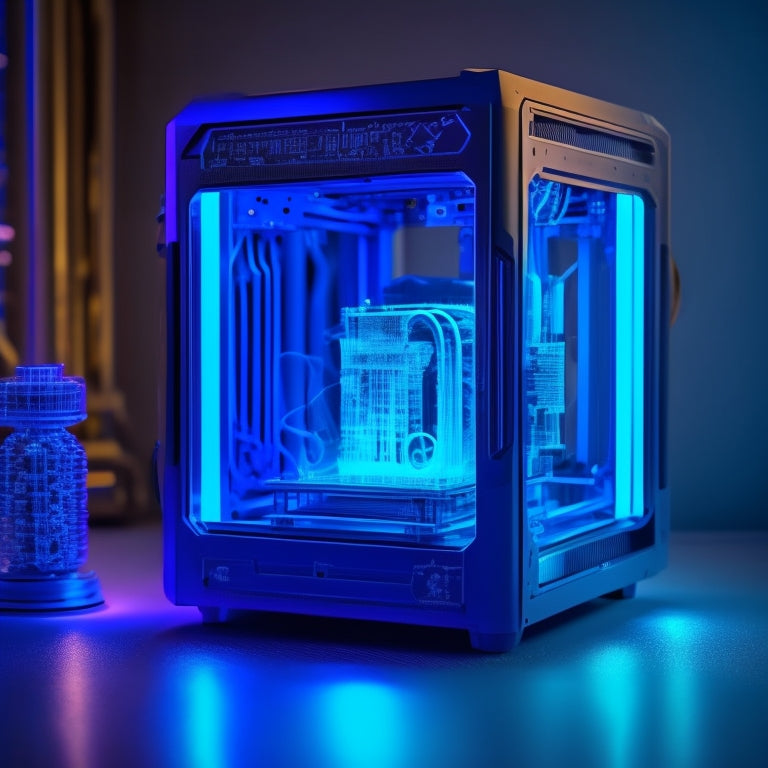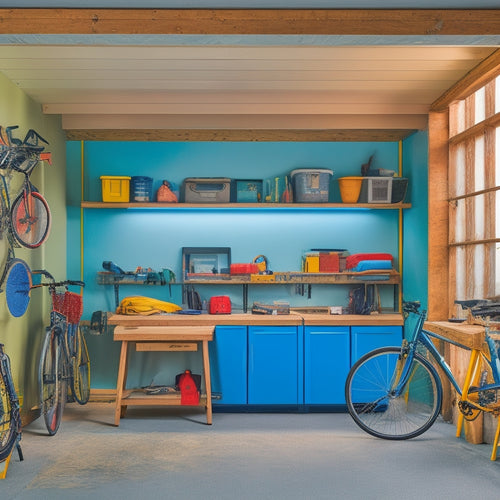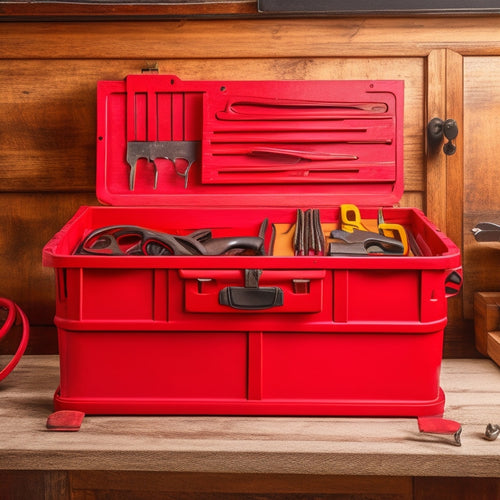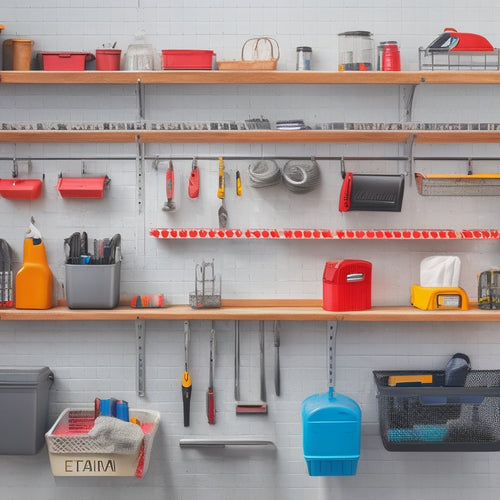
Revolutionize Your 3D Prints With Top Gear
Share
Revolutionizing 3D prints requires a harmonious integration of top-tier gear and cutting-edge techniques. Core 3D printing technologies, such as extrusion, powder bed fusion, and vat photopolymerization, facilitate rapid prototyping and production of intricate designs. Precise calibration and maintenance of 3D printing tools, along with ideal material selection, are essential for exceptional print quality. Investing in premium tools, such as advanced modeling software and specialized post-processing tools, further enhances print quality and precision. By optimizing the design-to-print process, 3D enthusiasts can unleash unprecedented levels of refinement and detail. Explore the nuances of top gear to maximize the full potential of your 3D prints.
Key Takeaways
• Leverage core 3D printing technologies like extrusion, powder bed fusion, and vat photopolymerization for precision and accuracy.
• Invest in premium design tools like CAD software and advanced modeling software to refine designs and reduce printing time.
• Maintain and calibrate 3D printing tools regularly to prevent mechanical failures and ensure optimal performance.
• Optimize the design-to-print process with advanced slicer software and tailored printing strategies to minimize material waste.
• Elevate print quality with precision by selecting the right materials and using specialized post-processing tools like sanding and finishing techniques.
Core 3D Printing Technologies
Employing extrusion, powder bed fusion, and vat photopolymerization, core 3D printing technologies facilitate the layer-by-layer creation of complex geometries and structures. These technologies empower rapid prototyping, allowing designers and engineers to bring innovative ideas to life quickly and efficiently.
The precision and accuracy of these processes enable the creation of intricate designs that would be impossible to produce with traditional manufacturing methods. By harnessing the strengths of each technology, users can achieve unparalleled levels of complexity and customization, revealing new possibilities for product development and innovation.
With core 3D printing technologies, the boundaries of what is possible are pushed to new heights, enabling the rapid creation of complex structures and intricate designs with unprecedented accuracy.
Elevate Print Quality With Precision
By leveraging the capabilities of core 3D printing technologies, manufacturers can focus on refining their printing processes to achieve exceptional quality, a pursuit that hinges on the precise calibration and maintenance of 3D printing tools.
Regular printer maintenance is vital to prevent mechanical failures and maintain peak performance. This includes routine cleaning, lubricating, and replacing worn-out components.
Moreover, material selection plays a critical role in print quality, as different materials have distinct properties that impact the final product's texture, strength, and durability.
Essential Tools for 3D Enthusiasts
Regularly, 3D printing enthusiasts rely on a suite of essential tools to efficiently prepare, print, and post-process their creations, ensuring a smooth shift from digital design to physical realization. These tools can be categorized into design, preparation, and printing stages.
| Tool Category | Essential Tools |
|---|---|
| Design | CAD software, advanced modeling software |
| Preparation | Slicing software, digital calipers, leveling tools |
| Printing | Spatulas, knives, needle nose pliers |
Proper tool maintenance is important to guarantee optimal performance and longevity of 3D printing equipment. By investing in premium tools and maintaining them regularly, enthusiasts can achieve unparalleled print quality and precision. Advanced modeling software, for instance, enables complex designs and intricate details, while digital calipers ensure precise measurements.
Post-Processing Techniques and Tools
Precision post-processing techniques, fueled by an arsenal of specialized tools, breathe life into 3D prints, transforming them from rough, unfinished prototypes into sleek, refined creations.
To achieve the desired finish, sanding tools are essential for smoothing out surfaces and removing layer lines.
Finishing touches, such as applying coatings or painting, require a range of materials and techniques to enhance the print's aesthetic appeal.
Additionally, cleaning essentials, including lubricants, are crucial for maintaining the printer's mechanical components and ensuring top performance.
Optimizing the Design-to-Print Process
As the post-processing stage sets the tone for a polished final product, it is equally important to optimize the design-to-print process, where a harmonious marriage of software, hardware, and technical expertise converges to produce prints that meet exacting standards.
Design optimization is vital, and this can be achieved through advanced slicer software that allows for model tweaks and printing strategies tailored to specific print jobs. By leveraging these tools, enthusiasts can refine their designs, minimize material waste, and reduce printing time.
Frequently Asked Questions
Can 3D Printing Be Used for Large-Scale Industrial Production?
With 78% of manufacturers already utilizing 3D printing for production, it's clear that additive manufacturing is poised for large-scale industrial adoption, enabling mass production and industry disruption through rapid prototyping, customization, and reduced lead times.
How Do I Troubleshoot Common 3D Printing Errors and Issues?
To troubleshoot common 3D printing errors, identify layer shifting by inspecting for misaligned layers, and address warping issues by ensuring proper bed adhesion, maintaining ideal temperatures, and using reinforced materials or brims.
What Safety Precautions Should I Take When Working With 3D Printing Materials?
Guaranteeing proper handling of 3D printing materials is like working with delicate precision instruments, necessitating utmost care; wear gloves to prevent skin irritation and inhalation of hazardous particles, and maintain adequate ventilation systems to minimize exposure risks.
Can I Use 3D Printing to Create Functional, Moving Parts?
"Utilizing 3D printing, functional, moving parts can be created by designing and printing intricate Gear Systems and Kinetic Assemblies, enabling the fabrication of complex mechanisms with precise tolerances and smooth articulation."
How Do I Ensure Intellectual Property Protection for My 3D Printed Designs?
Did you know that 70% of 3D printing companies report intellectual property theft? To safeguard your designs, consider filing for design patents, which protect unique shapes and configurations, and ensure adherence with copyright laws, which cover creative expressions and digital files.
Related Posts
-

7 Essential Foldable Workbenches for Garages
When selecting a foldable workbench for your garage, you'll want to contemplate factors such as space-saving design, ...
-

Portable Tool Chest Essentials
When stocking your portable tool chest, you'll want to prioritize essential hand tools like hammers, tape measures, a...
-

3 Simple Steps to a Garage Tool Wall You'll Love
To create a garage tool wall you'll love, start by planning the space, taking inventory of your tools, and measuring ...


